A series of events lined up that allowed us to take a break from our day-to-day activities and get away for a few days. We decided to go to the island of Palawan.
First, since it was the traditional Christmas and New Year’s Holidays, things in the Philippines get very slow. Christmas is by far the biggest holiday in the Philippines. As I mentioned, the Christmas holiday starts in September and decoration don’t come down until the end of January.
Secondly, a remodeling of several offices including ours was in progress that started shortly before the Christmas/New Years break with the theory that there is little going on in the Area Offices so this was a good time to begin the remodeling.
Starting the week before between Christmas our offices had all of the furniture and desks moved out to make way for an expansion of our offices that would include adding a private office to enhance our ability to do in-office oral history interviews vs. having to schedule other conference rooms and offices in the Area Office Complex.
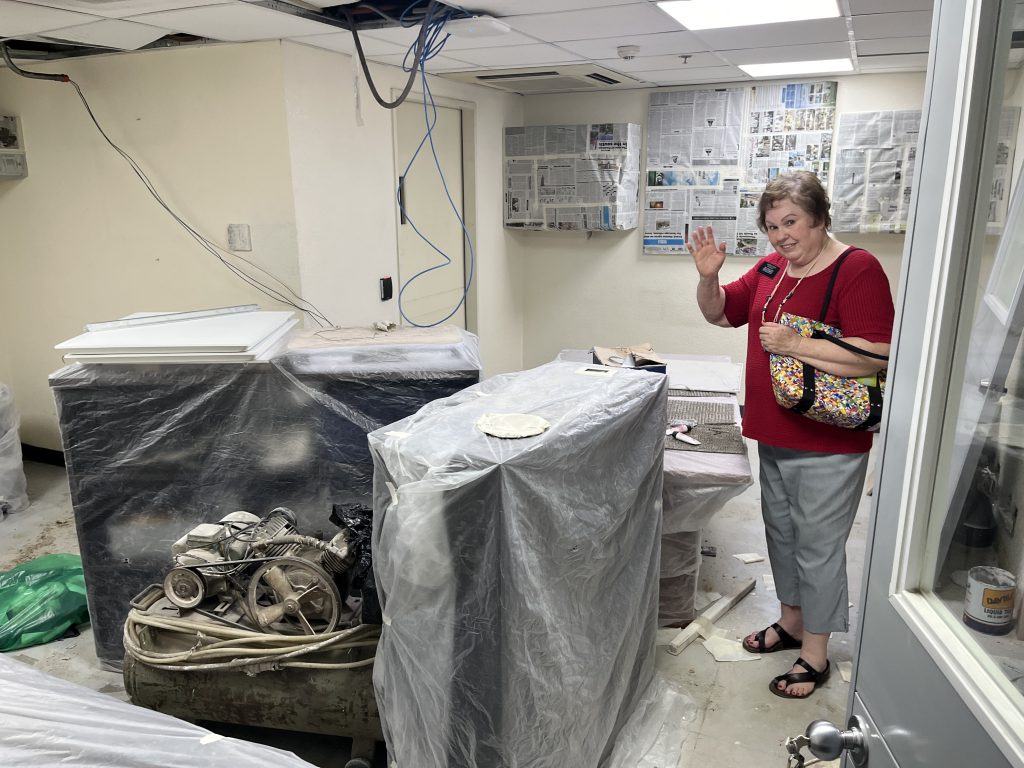
We stopped in to check on how things are going on our office remodel
Since we didn’t have a place to work, this necessitated working from our home apartment, which we do occasionally. Since our manager opted to use some of her vacation days during this time, we opted to take advantage of this slow time and plan a trip since little would be happening anyway.
There are lot of scenic places to visit in the Philippines and we hope to be able to get to see many more of these before we leave. We decided to visit the island of Palawan. We flew from Manila to Puerto Princesa, Palawan.
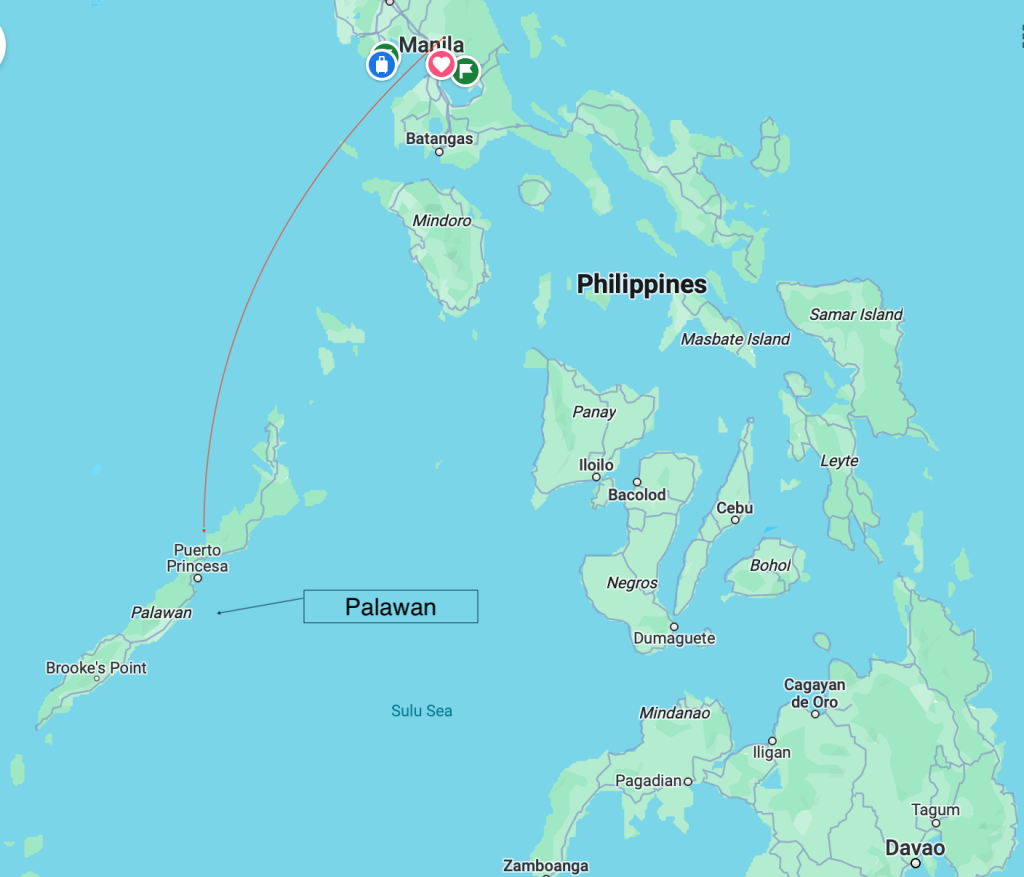
After a few days we made our way north to El Nido. El Nido is known for beaches and scenery.
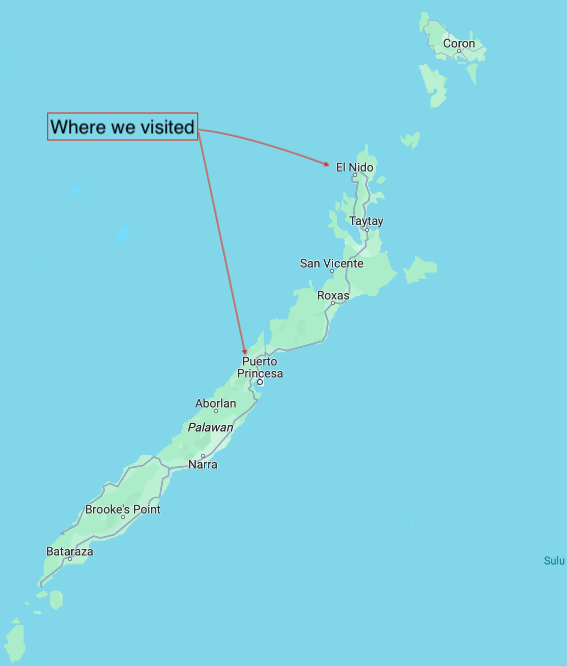
Since we spend most of our time on the Island of Luzon, the largest and north most island, this is the first time we have left the island of Luzon. Although, we have traveled around Luzon, we spend most of our time in the greater Manila area. Visiting Palawan was an opportunity to see another part of the Philippines. I guess I can sum our trip up like this: Palawan was definitely the Philippines but yet at the same time very different. One thing I noticed that was the same…the language. As I’ve mentioned before, our mission call was to an English speaking mission. Yes, English is spoken here but when you get into the provinces (the rural areas), not so much.
Another senior mission couple we serve with served his first mission to the Philippines nearly 50 years ago as a young man. He has shared that when he served here the first time, nearly everyone could speak English. He never learned Tagalog or one of several different languages spoken in the Philippines. In a 1970’s a decision was made to preserve the cultural language by focusing on it making it the primary Filipino language Tagalog or what is officially now called the Filipino language – however, most people still refer to the language as Tagalog. This means there are now two official languages in the Philippines – Tagalog and English , or depending on where one lives in the Philippines, one of the other native languages of Cebuano, Hiligaynon , or Ilokano, would most commonly be spoken in the home. What this means in practice is that English (which is studied in school but not spoken in the home) may be understood but not spoken by most people.
Palawan would be consider a province, few people other than those in hotels or those that directly interface with foreigners (tourists) can speak English.
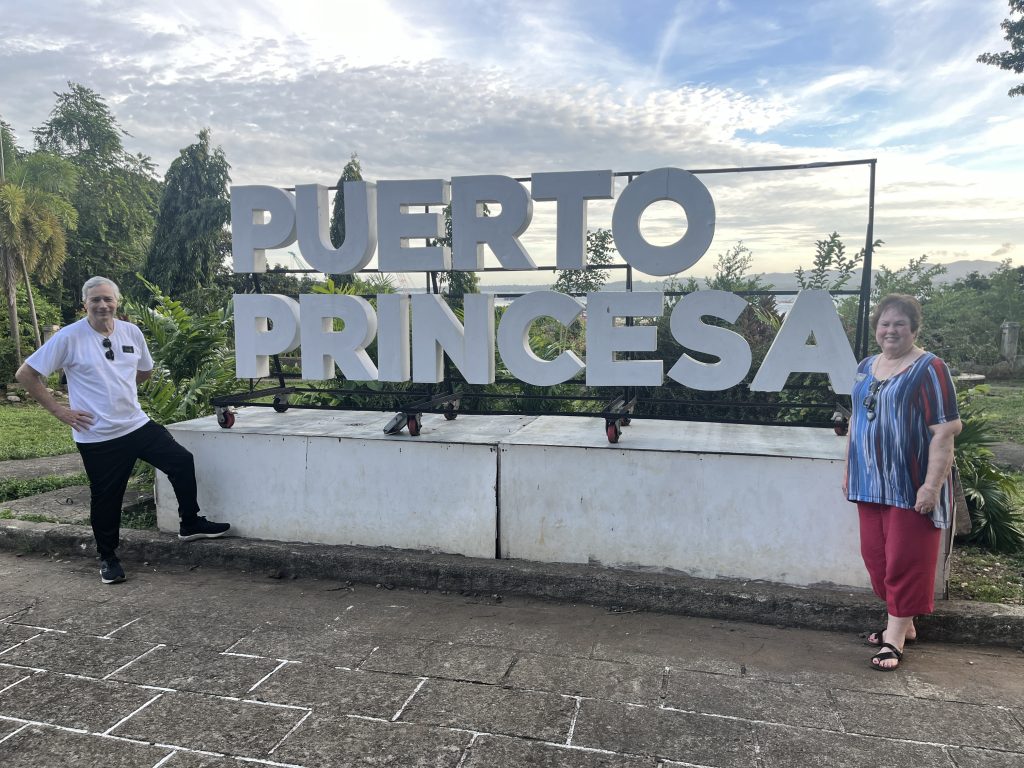
Our first stop was the Puerto Princesa City sign that lets you know that you were entering the city.
Trikes
Trikes are the primary mode of transportation for a large part of the Philippines. In Palawan we had to rely on Tricycles (Trikes) for our transportation which is what most Filipino without cars use to get around – and most Filipino don’t have cars. The Trikes in Palawan are different than those in Greater Manila which includes Quezon City because there is space for 4-5 people on these Trikes. Here in Palawan only 2-3 people can ride in a trike because Puerto Princesa hosts a lot of tourists who (like us) have luggage. The Trikes in Palawan need a place on the rear of the trike to carry the luggage to external seating outside of the cab is non-existent and used for luggage storage. Marcia and I rode next to the Trike driver in the small cab. Many of the Trikes in Palawan tend to be much nicer and more modern than those in Metro Manila.
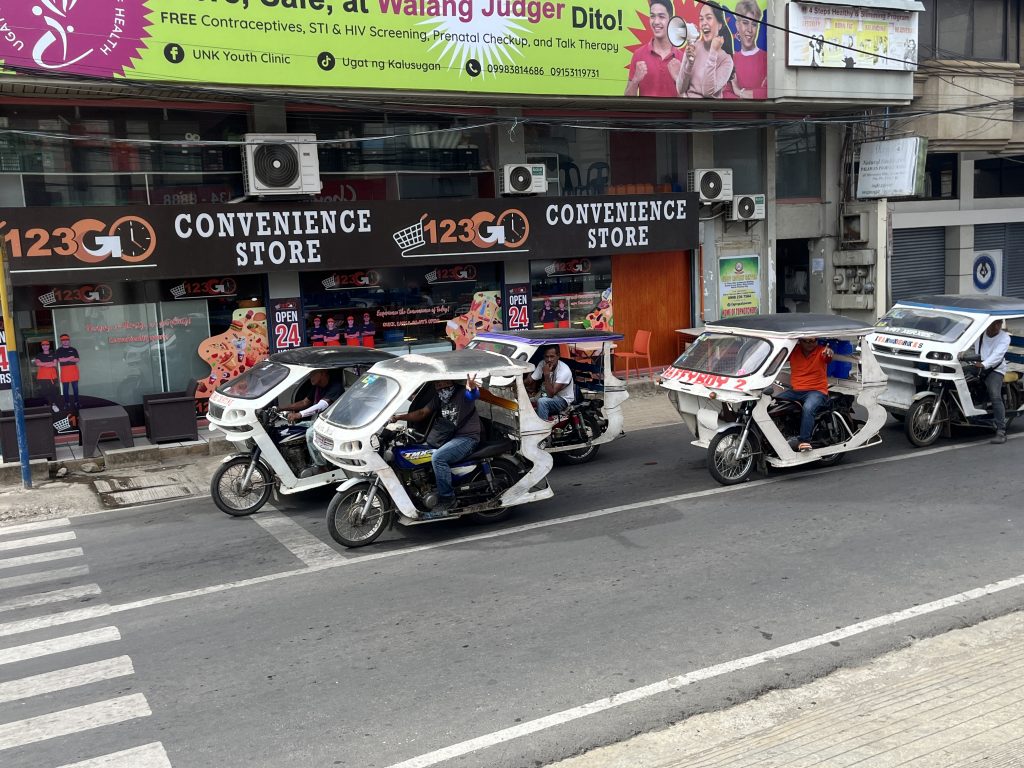
Trikes in Puerto Princesa
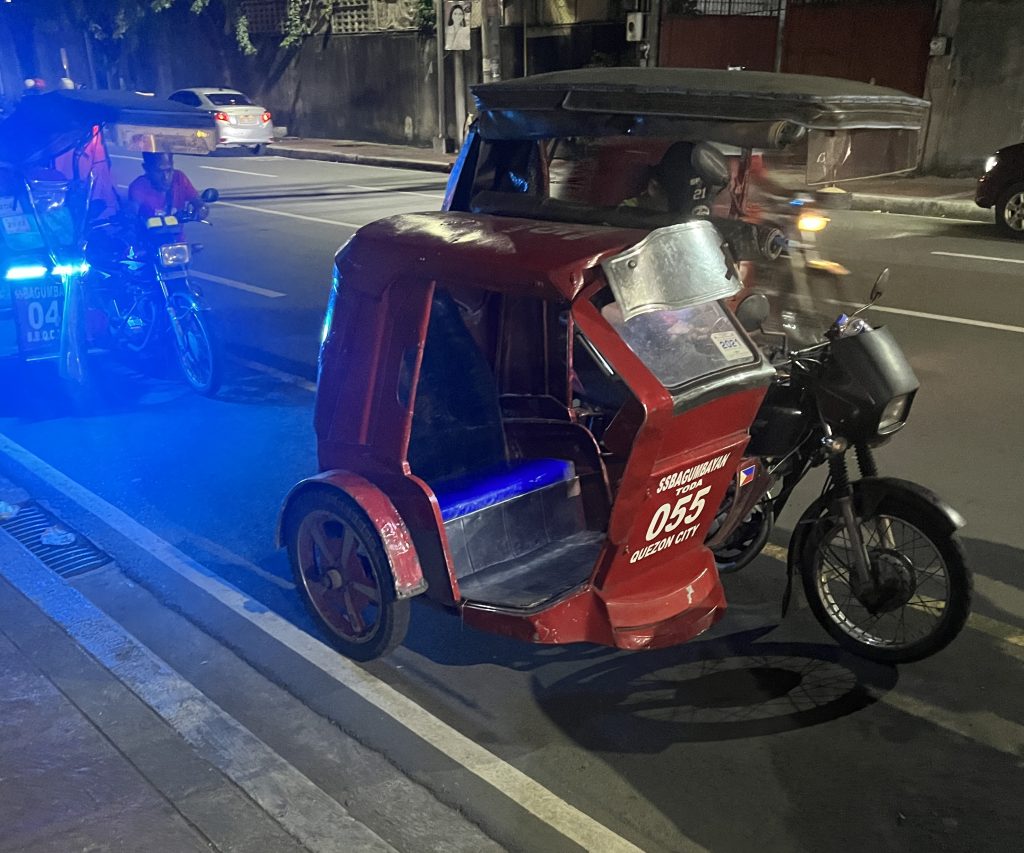
Trike vehicles in Quezon City with up to two people seated in the small cab – on the opposite side of this Trike behind the driver there is two to three passenger seat – total passengers of up to five people.
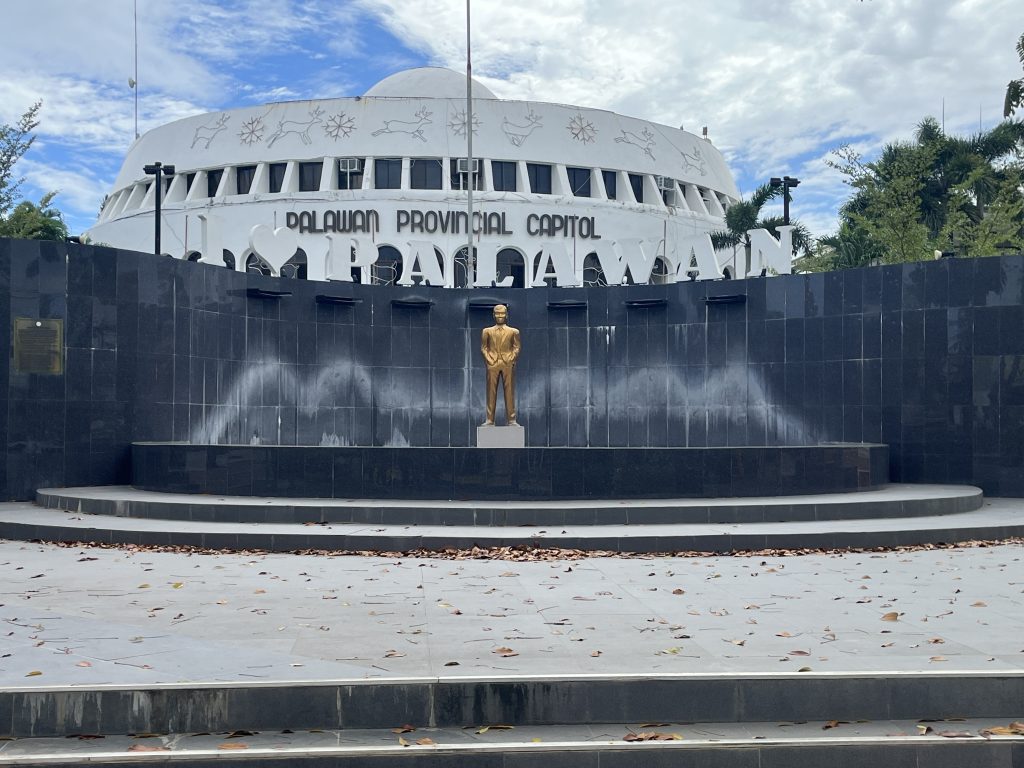
This is the Provincial Capitol Building in Puerto Princesa – similar to a state capitol buildings in the USA
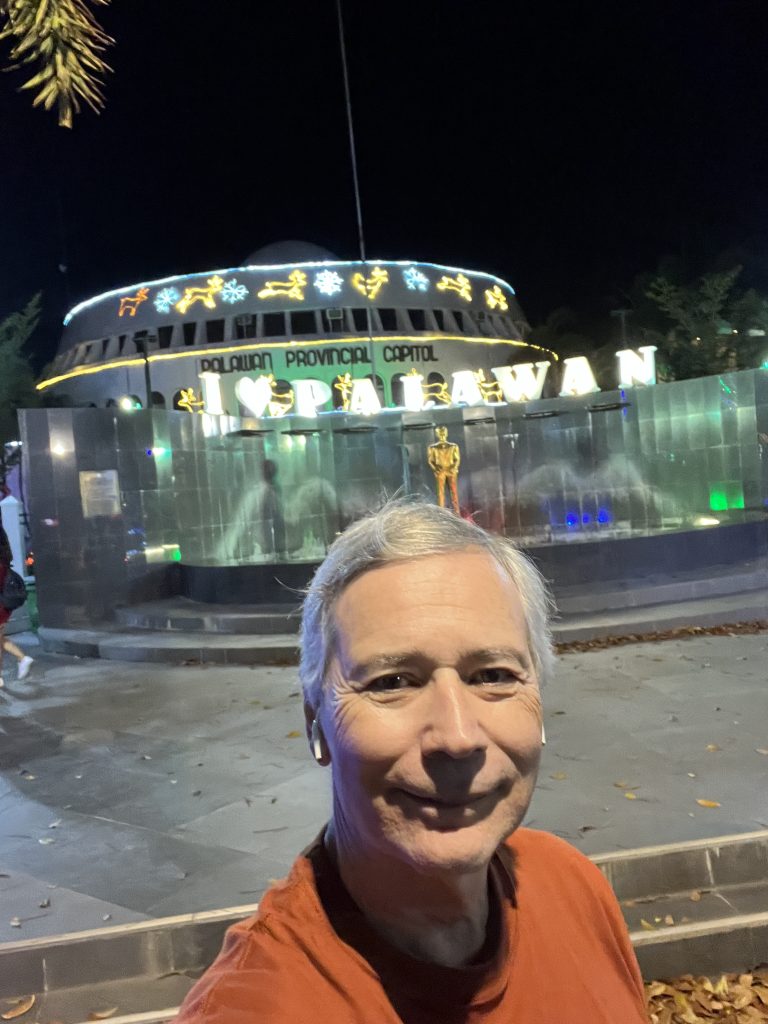
This is the capitol in Puerto Princesa at night taken during one of my night walks where I get to see the city at night. Notice that Christmas decorative lights – which are everywhere in the Philippines.
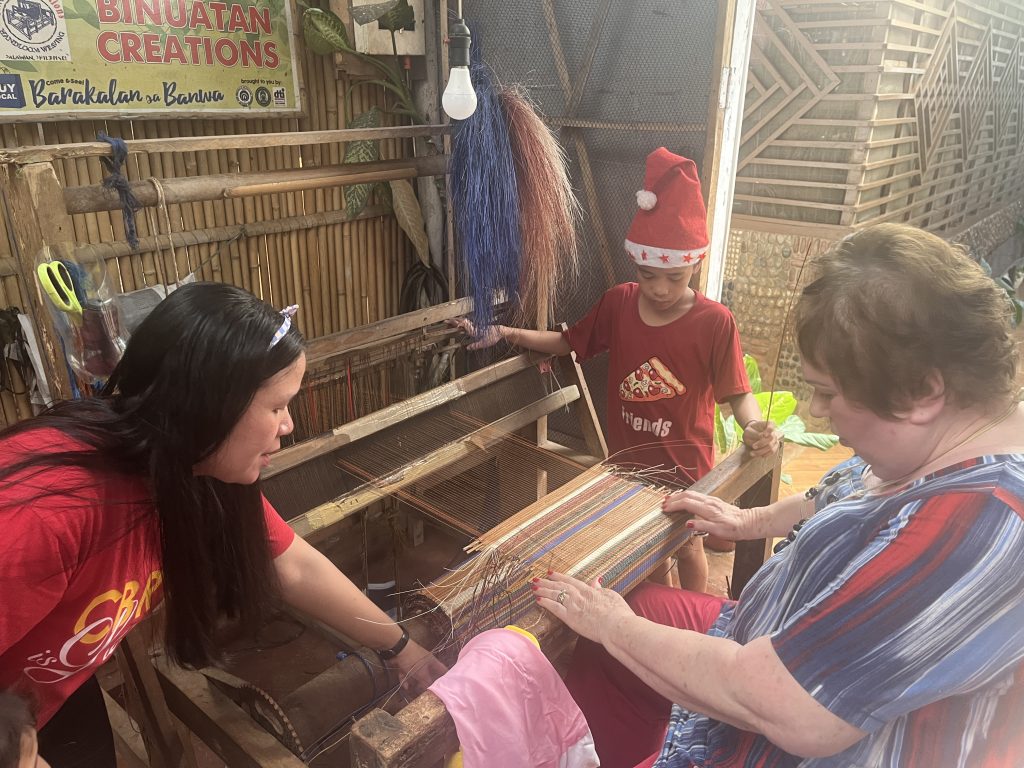
A Filipina teaches Marcia to weave
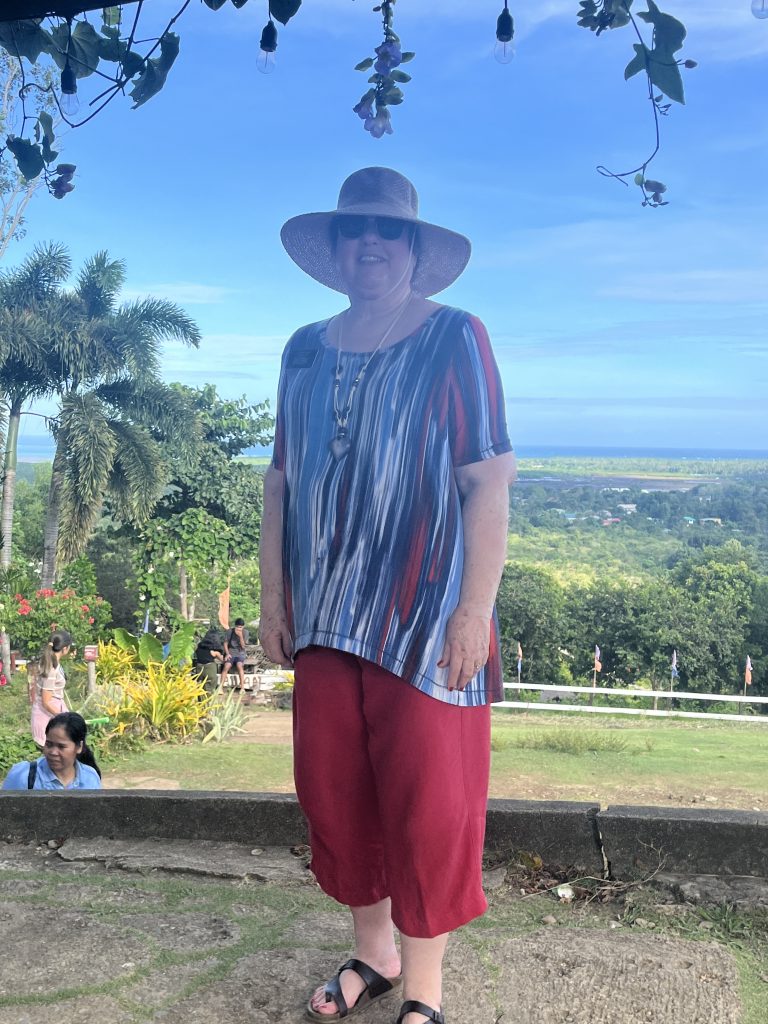
Marcia in Puerto Princesa with the hat she purchased at the weaving factory
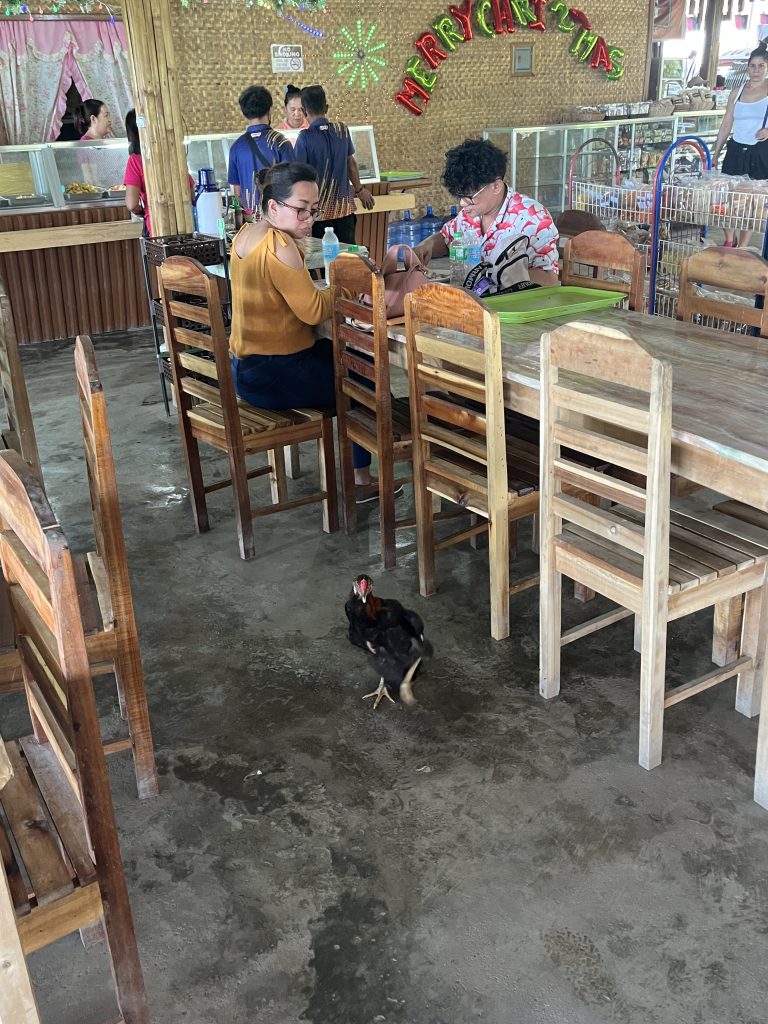
A local bird seeking a hand out in a restaurant we stopped at on our way from Puerto Princesa to El Nido. It common in outdoor restaurants in the provinces to have animals roam around.
El Nido
We had planned on taking an island hopping tour while in El Nido but sometime Mother Nature intervenes. We got up at the day break and headed to the beach to catch our boat for a day of visiting four different islands but the coast guard cancelled our boat trip because of high winds. Since we were going to be in El Nido for only a few days and most of the other island hopping tours were already booked during the holidays we opted to visit local beaches vs. make a day visiting beaches and site seeing on other islands.
This was easy because on of the most scenic beaches was less than a quarter of a mile from where we were staying. However, there was one problem when we arrived at our villa. I had checked out this villa that had five star reviews and several dozen pictures with great ocean and scenic views…the issue – to get to the villa you had to hike up well over a hundred steep and vertical steps. Generally, this wouldn’t be much of a problem for the younger set but for us, it took us time to climb these stair in the heat of the day and in the humidity to make it to the villa, which turned out to be as billed – when I asked our host about the stairs, his reply, “This was in the description.”
I checked…there was no mention of stairs in the description. The only reference to stairs was one single picture of a short section of the stairs. No one would ever difine from the posting of the villa that you had to climb Mt. Everest to get to the villa.
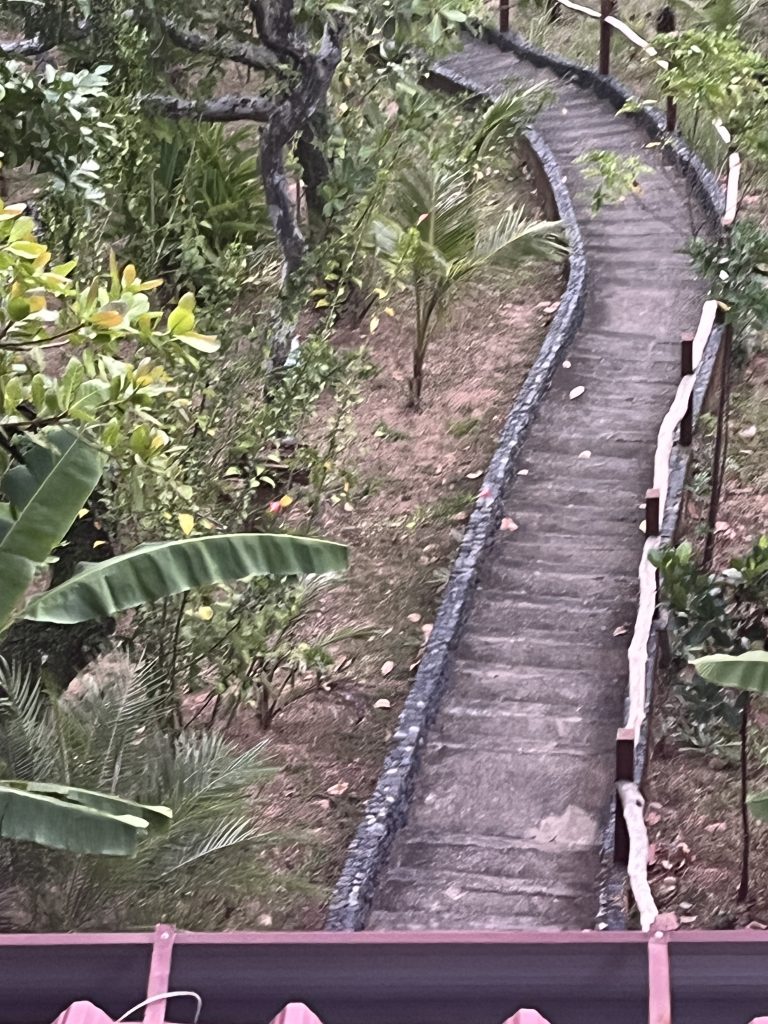
The beginning of the climb up the stairs to the villa
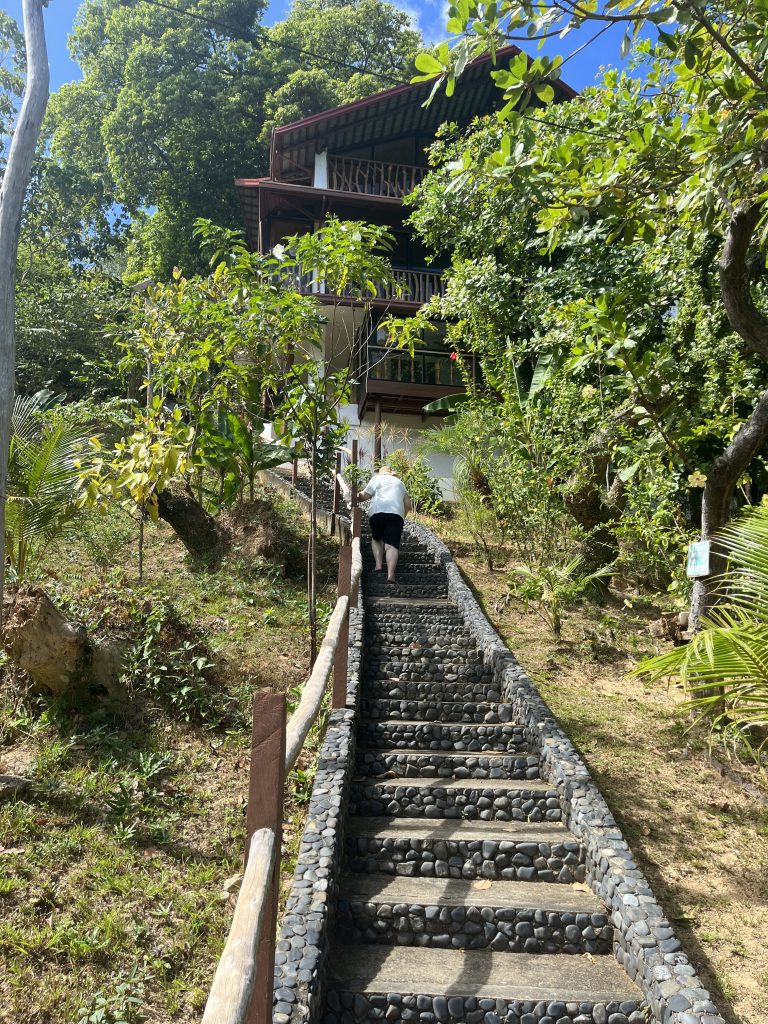
Marcia on her way up the stairs
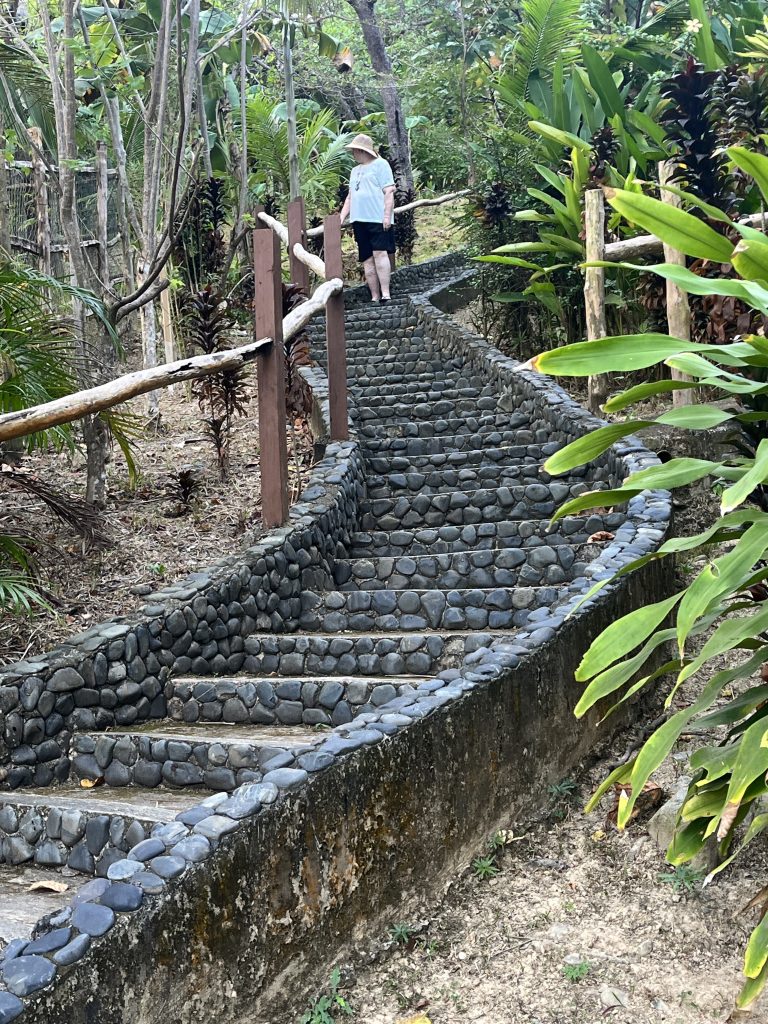
Marcia taking a breather before tackling the last set of stairs.
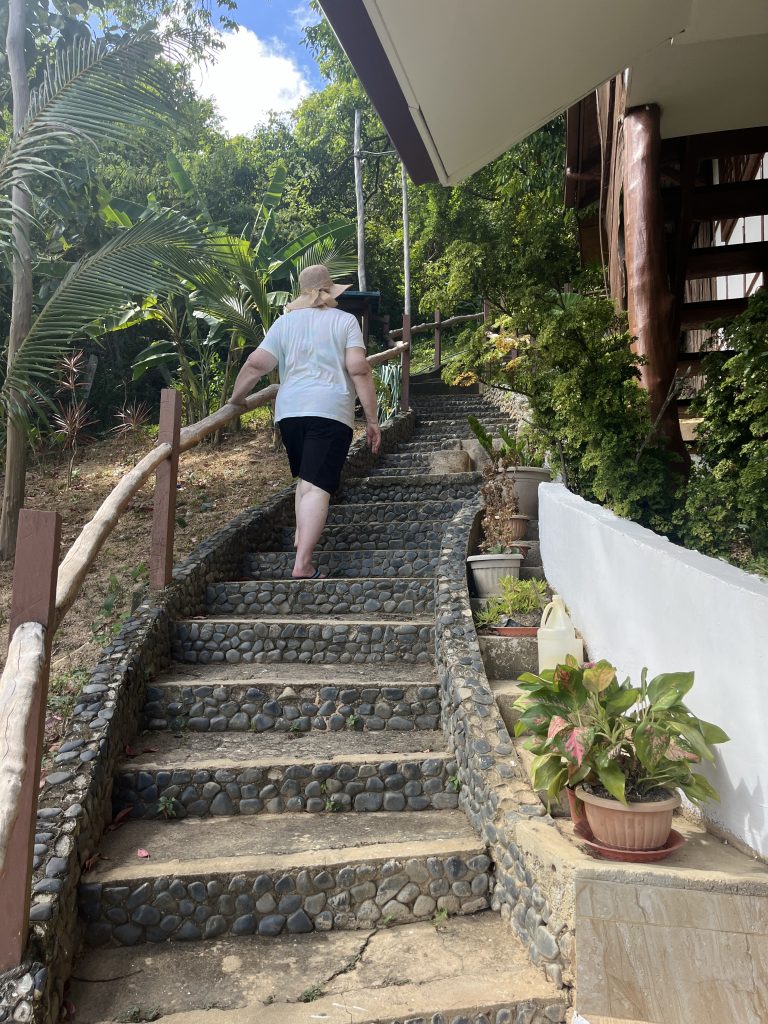
Finally….at the top and entering the villa and standing in the veranda area of the villa the view was as billed
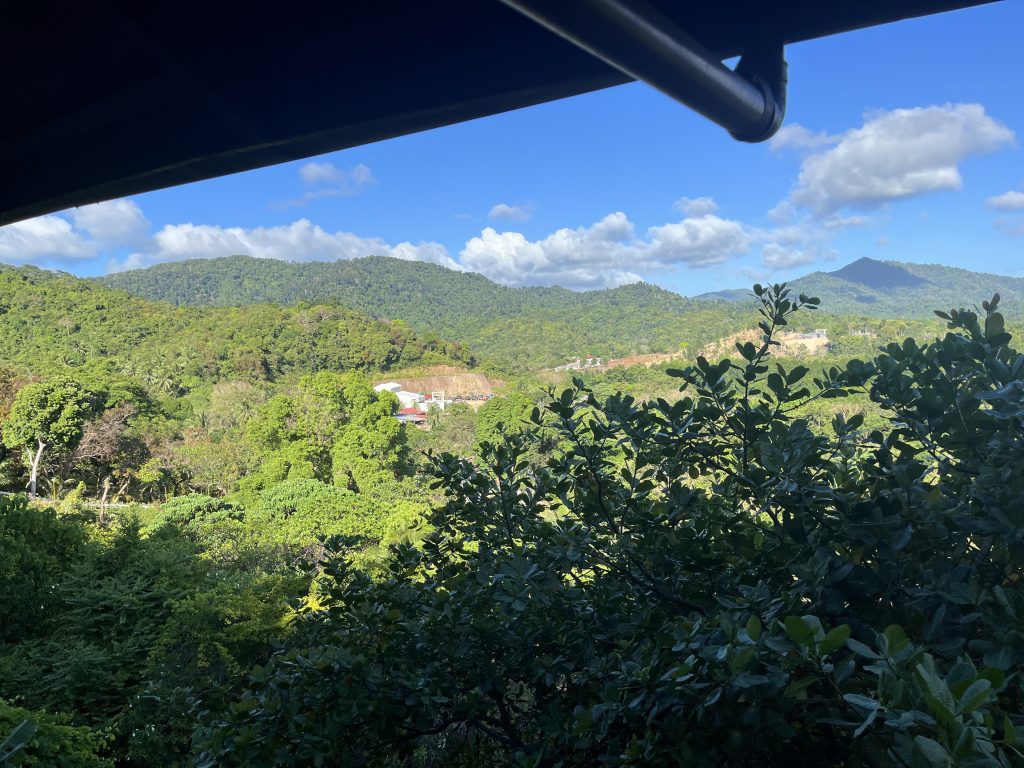
The view from our front room/veranda of our villa in El Nido
Since our only real sight seeing boat trip was cancelled, we decided to spend most of our time at the beach near where we were staying.
Marcia at Vanilla Beach
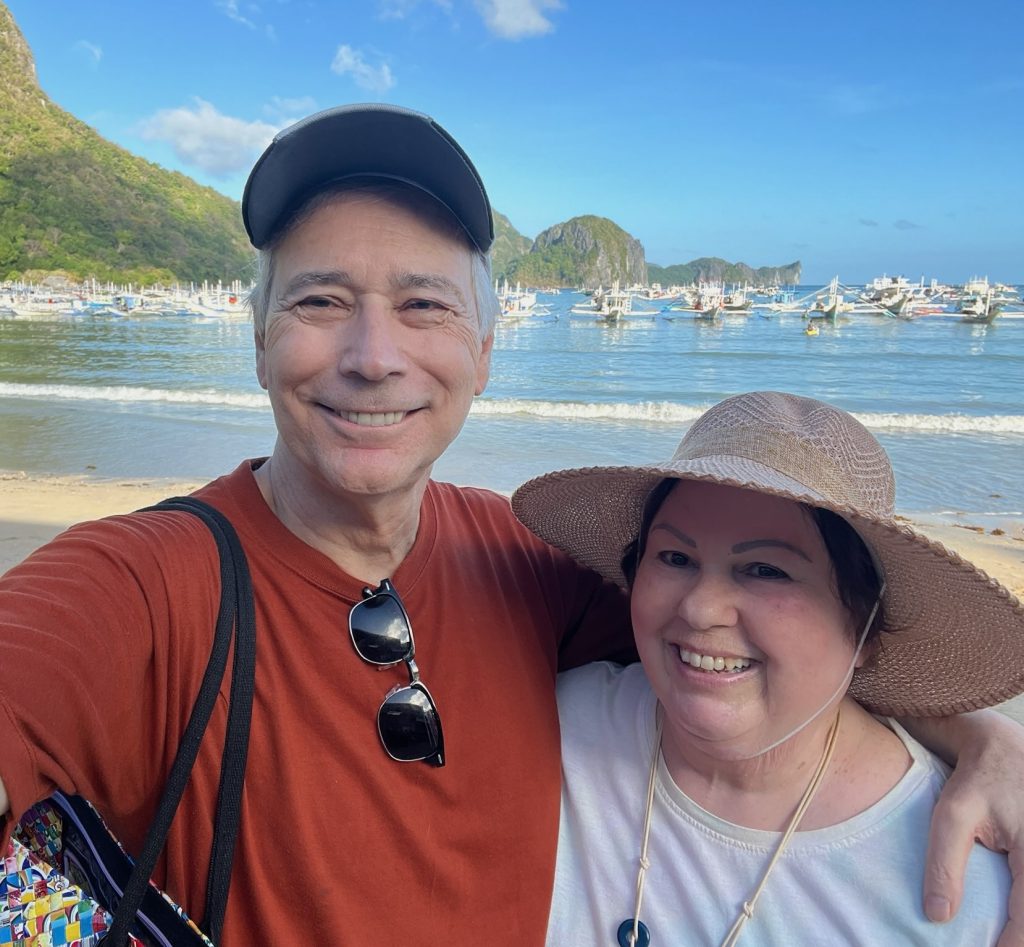
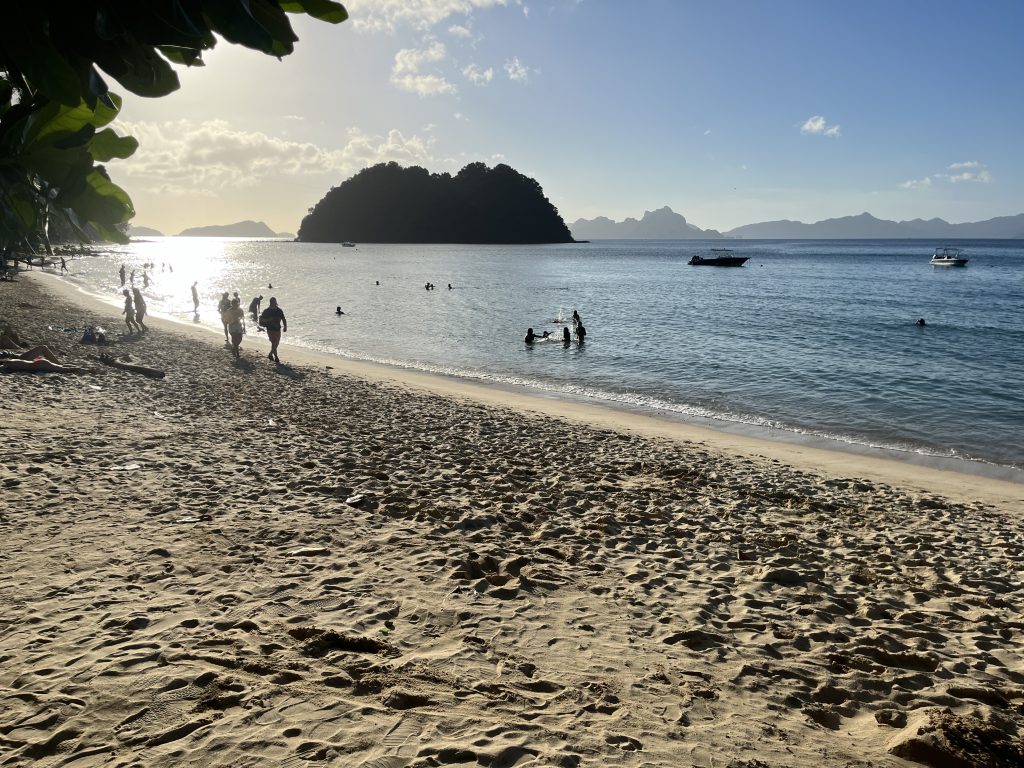
A beach view in the late afternoon
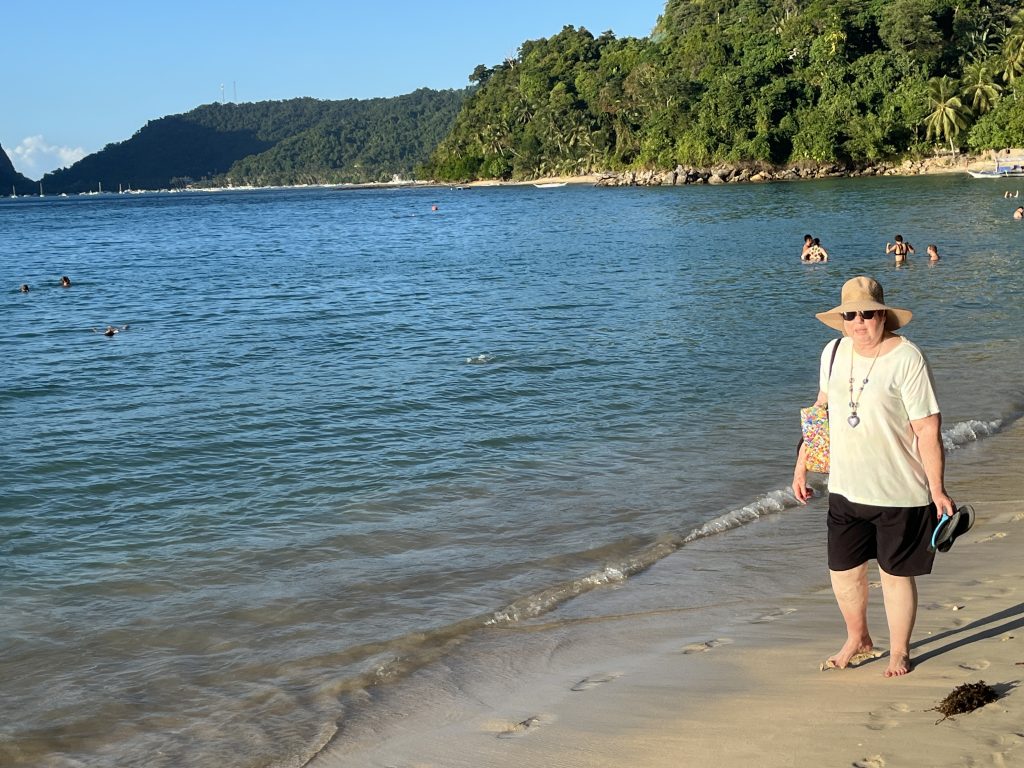
This is about as close as Marcia got to swimming on this trip

Marcia relaxing after lunch at the beach
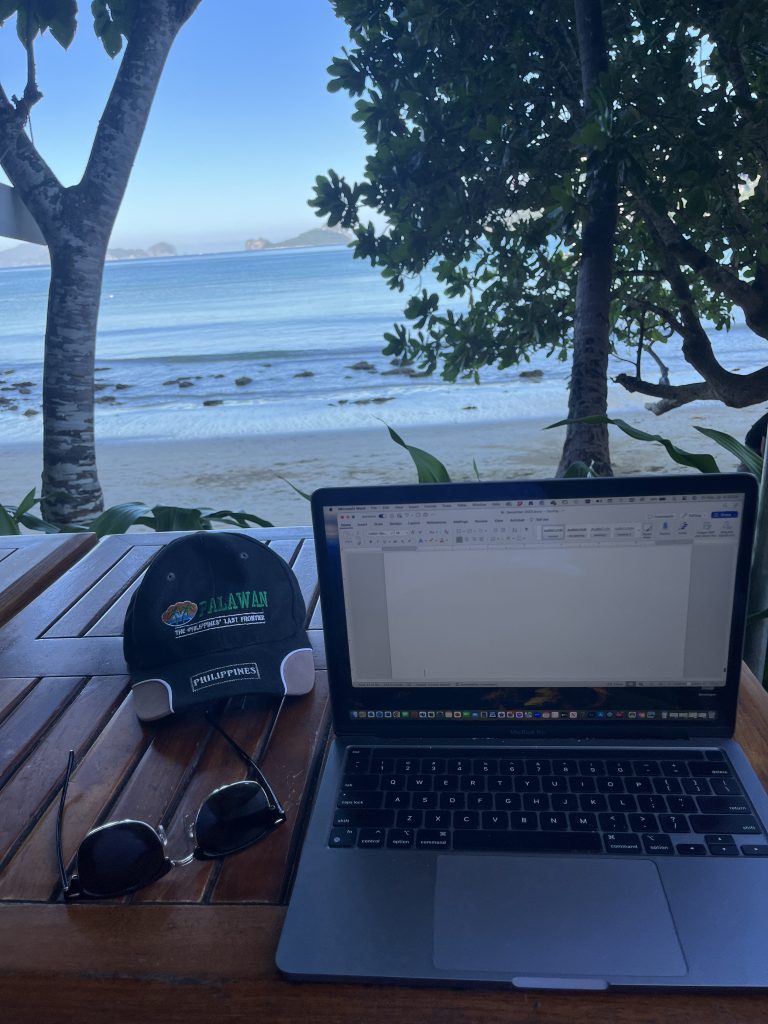
While we stayed in El Nido, I would leave our villa in the early morning around 6:00 am and walk to the beach and spend the day working on my laptop. Marcia would join me for lunch.
Overall Impression of Palawan
In a tour of Puerto Princesa, the guide shared that there were city ordinances on fines for not keeping the city clean and I can tell you it was evident. There were no garbage piles on the side of the road as is frequent in greater Manila. They don’t use garbage cans, they simply pile up the garbage in bags (sometimes) for the garbage trucks to pick up. None of this was observed in Palawan.
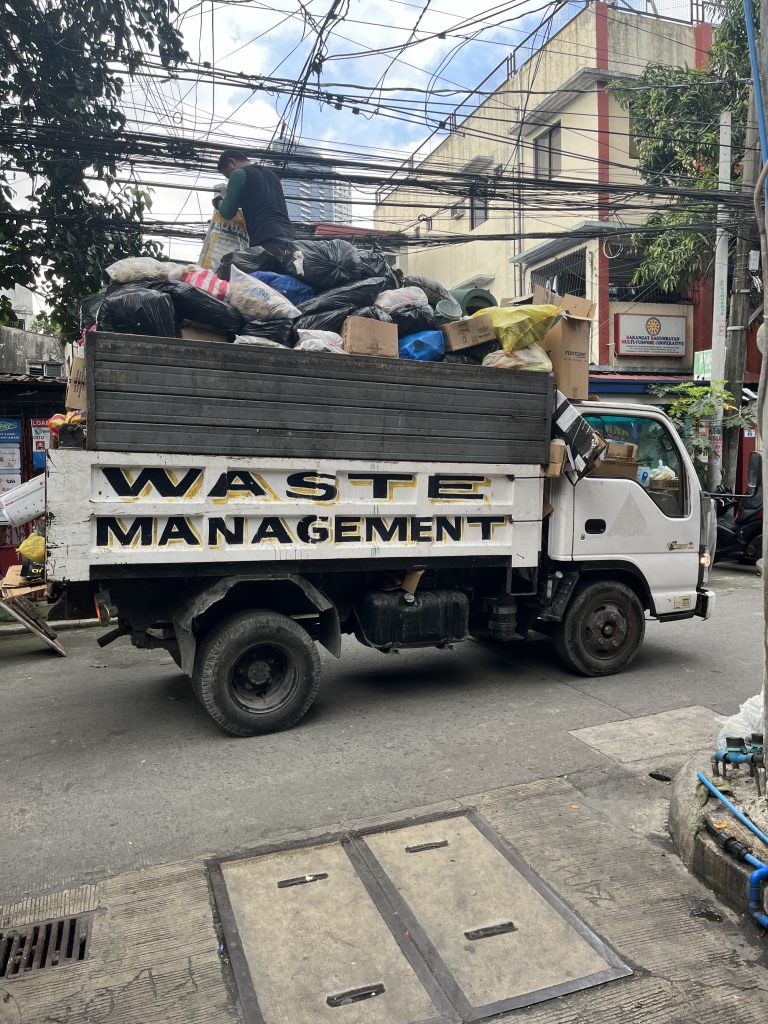
The picture above was taken on a morning walk in the Barangay near where we live. Since there is not garbage cans there are no power lift arms to empty the garbage cans, only workers to toss the garbage bags on to the garbage collection trucks. Also, notice the power and cable lines that run to the homes in this Barangay. If there is an outside of the home electrical or cable problem, I have no idea how this would be identified.
In Palawan, there is apparently a regulation that a new home can’t be constructed unless it has a garage. This limits the number of cars on the road. Traffic was much less noticeable in Palawan.
Back to Manila
As we arrived at the airport for our return trip to Manila, I learned a few tricks on my way to Palawan at the Manila airport. In the US I had my TSA pass that allowed me to skip long check-in lines. Since there is no similar program here in the Philippines, on the way to Palawan we stood in line for 40 minutes to check in. When I got to the check in counter, I noticed another line for the priority check-in and for “Seniors” with only two people waiting. I noted this.
On the say back to Manila, I wasn’t going to make the mistake of standing in the normal check-in line and found my way to the “Seniors” and “First Class” line.
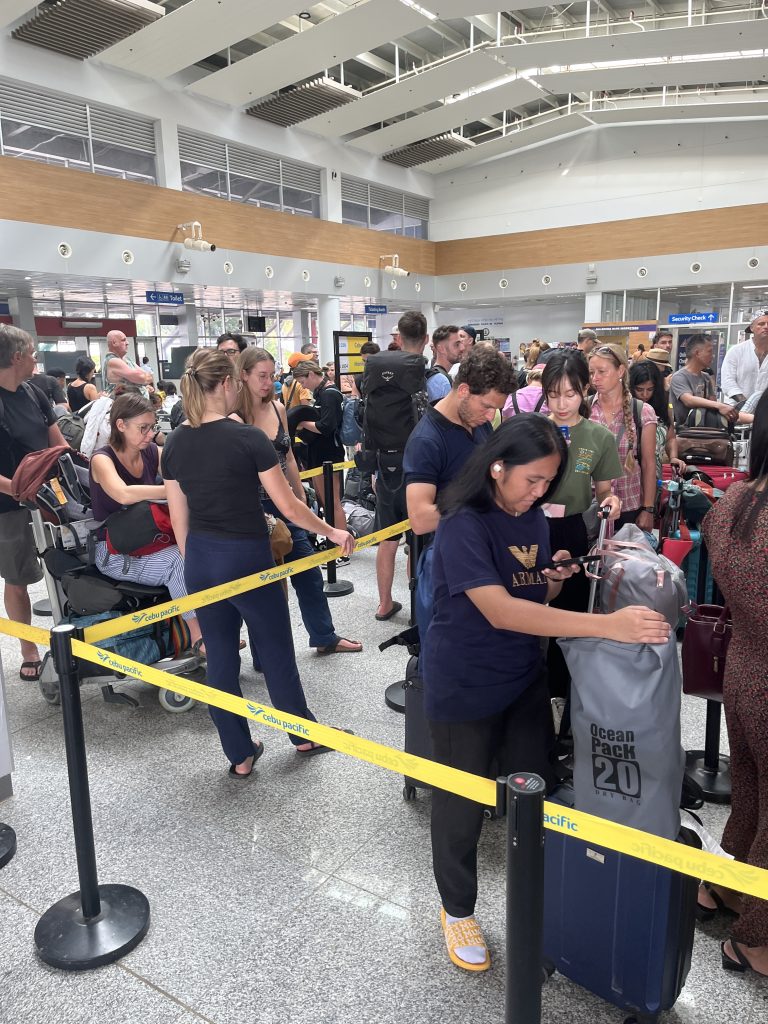
The regular check-in line at the Palawan airport – at least a thirty minutes wait
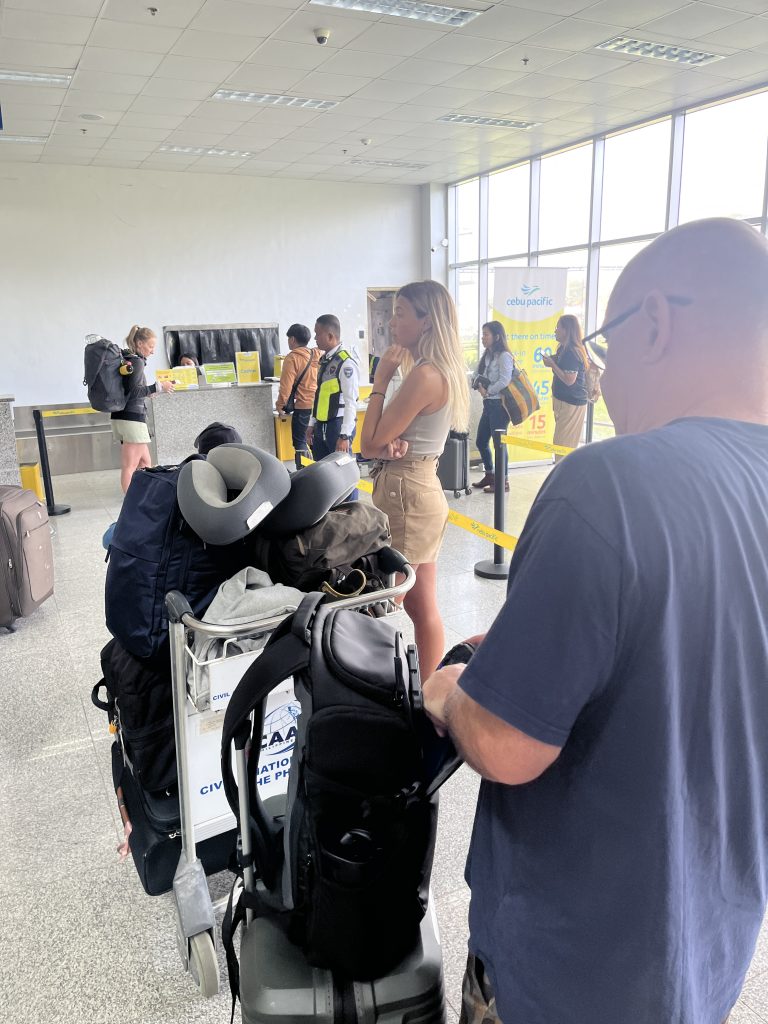
I was third in the Priority check-in line for “First Class and Seniors” and only had to wait a few minutes – much better than 45 minutes coming her from Manila.
Respect for Age
One thing that the Philippines has an advantage over the US is how the culture views older people. With our Filipino Driver’s license we get as much as a 20% discount on our meals at most restaurants. The lowest discount because we aren’t native Filipinos is 10%. There are priority lines in grocery stores for seniors and the common salutation a Filipino will offer an older person is to end a greeting with “Po” which is a sign of respect in the Philippines language. Here I don’t feel bad about being older in fact, I am glad I am a lot of the times.
Mayday, Mayday
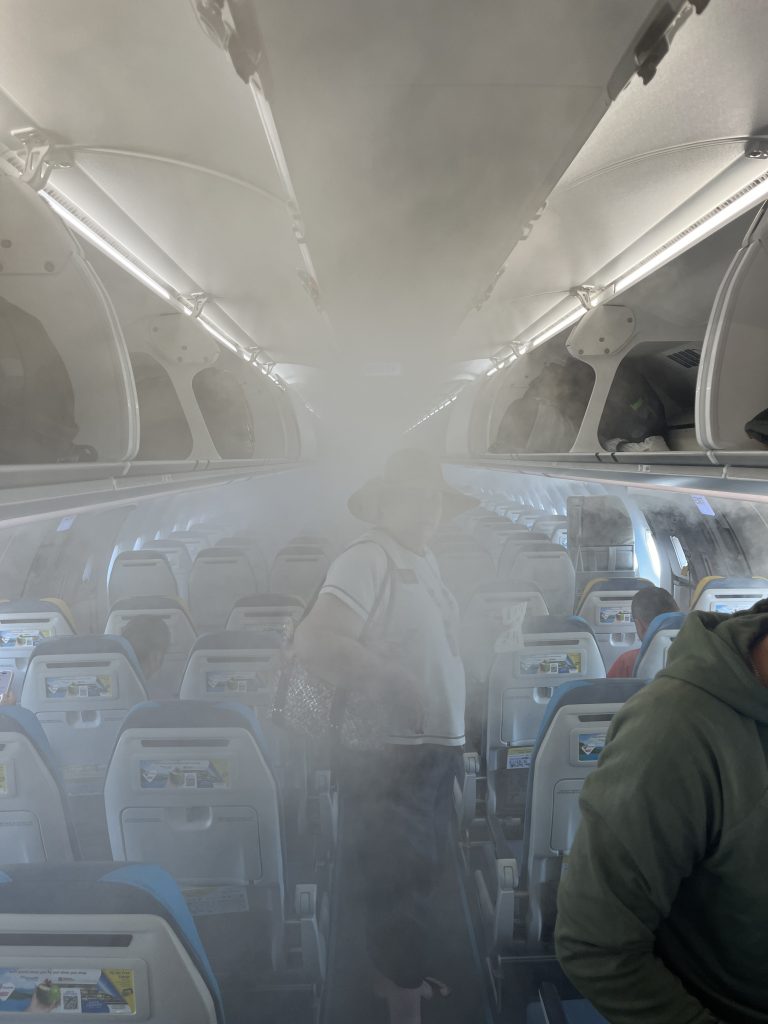
This is Cebu Air, Flight 686, “Mayday, Mayday – the cabin is filling with smoke……“
Boarding Before Our Flight Back to Manila
Having not flown in the pacific area or to Pacific Rim countries before which are hot and humid, I was unfamiliar with the phenomenon of atmospheric equalization when the outside humid air is piped into an aircraft cabin where there is cooler less humid air and as the more humid air clashes with the less humid cooler air this creates a mist. Now I know.
What I Continue to Learn in the Philippines…..
Jeepney’s
Jeepney’s in the Island of Luzon are a common site. They got their start as a mode of transportation after WWII when surplus jeeps were modified for public transit and began their cultural journey into Filipino lore.
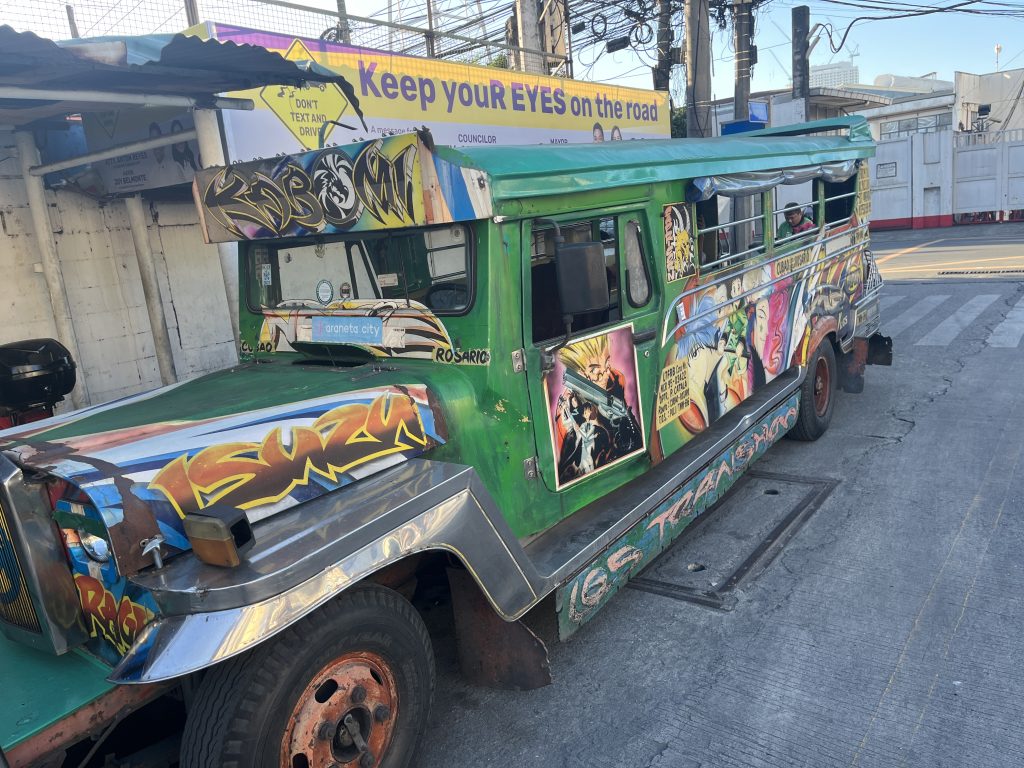
A traditional Jeepney in Luzon
The Future of Jeepney’s
Jeepney’s have diesel engines which are major air polluters. I always change lanes when driving behind a Jeepney. The Philippines as with many other countries wishing to eliminate hydrocarbons have committed to phase out the traditional Jeepney’s to more modern EVs that are air conditioned with padded seats. I’m sure there will be areas where tourist will still be able to take a Jeepney ride like they do in NYC in a horse and buggy.

Thought of the day: If you don’t document or write it down, it never happened.
Scripture of the day: 1 Ne 11:17: …”I know that he loveth his children; nevertheless, I do not know the meaning of all things.”
